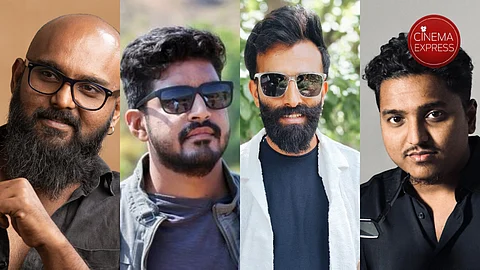

Sees Kaddi is a unique independent Kannada film directed by Rathan Gangadhar and co-produced by Sampath Shivashankara and Krithi Nannaiah. Using pencils, erasers, and paper as metaphors, it weaves five interconnected stories exploring childhood, memory, and imagination. At its heart is a novelist surrounded by curious children, but the true magic lies in the behind-the-scenes dedication of the technical team. Made with a focus on passion over profit, Sees Kaddi is a heartfelt reminder that creativity can thrive even with limited resources. As director Rathan Gangadhar puts it, “We believed in the story first. The rest followed.”
We spoke with the key minds behind the film, each of whom brought their own flair and philosophy to this ambitious endeavour
Sees Kaddi is built with limitations but endless creativity
Krithi Nannaiah, Production Designer & Executive Producer
"This is an independent film, built with limitations but endless creativity,” says Krithi Nannaiah, who has doubled as both executive producer and production designer. With a background in ad films, Krithi approached Sees Kaddi as an open canvas.
“We didn’t think like set boys or producers — we thought like storytellers,” she explains. “In one episode, I had to recreate an entire house, and I had the creative liberty to do it my way. We didn’t chase perfection through money. We used imagination and team spirit.”
From managing props to balancing production costs on the fly, Krithi treated each challenge as an artistic opportunity. “Even the actors got involved in the behind-the-scenes work. That’s how invested everyone was.”
Sees Kaddi is a time machine, which takes you straight back to childhood: Mahendra Gowda, writer, lyricist & actor
Sees Kaddi is a time machine, which takes you straight back to childhood,” says Mahendra Gowda, who not only wrote lyrics for the film but has also acted in it.
He speaks fondly of a particularly poetic segment involving a blank sheet of paper and a hand. “It’s a simple image, but it represents a beautiful relationship,” he says. “Each of the four stories has its own layers. If the audience pays attention, they’ll find themselves in them — especially in the forgotten slang and cultural textures.”
He credits Rathan’s writing as being “beautifully rooted” and full of nostalgia. “This film isn’t loud. It whispers to the child inside you.”
Sees Kaddi Is a DIY visionary, where every frame was fought for
Suneil Narasimhamurthy, Cinematographer
For Suneil Narasimhamurthy, Sees Kaddi has been a dream since 2015. “Rathan, Krithi, Jayanth, and I kept refining the stories until we had something magical. Then came the challenge of shooting it on a shoestring budget.”
With no room for extravagance, the crew turned to innovation. “We built our own lights, sliders, and camera stands using steel pipes, skating wheels, and apple boxes. Everything was DIY,” he shares.
They began principal photography in 2020 using cameras with customised lighting setups. “We controlled the entire environment ourselves. That control helped us create something cinematic, despite every constraint. It’s quality without compromise.”
He also praised the associate DOPs and colorist Abhishek Saravana for helping polish the film’s final look. “It was all teamwork. Every frame was fought for.”
The script of Sees Kaddi aligned with my core musicality:
KC Balasarangan, Music composer
Chennai-based composer KC Balasarangan first crossed paths with Rathan in 2019, and the meeting struck a harmonious chord. “When I heard the concept and the emotional arc of Sees Kaddi, I was immediately drawn in,” he says.
The duo began composing in 2020, starting with melodies and letting the script guide their rhythm. “There was an instant musical chemistry between us,” he adds. “Every idea I shared, Rathan would immediately resonate with.”
One of the most challenging pieces was a pre-climax sequence composed in Anandabhairavi raga. “It had to remain within strict traditional boundaries but still deliver emotionally. That’s where cinematic freedom came into play,” says Balasarangan. “I didn’t have to compromise my musical values — the script aligned with my core musicality.”